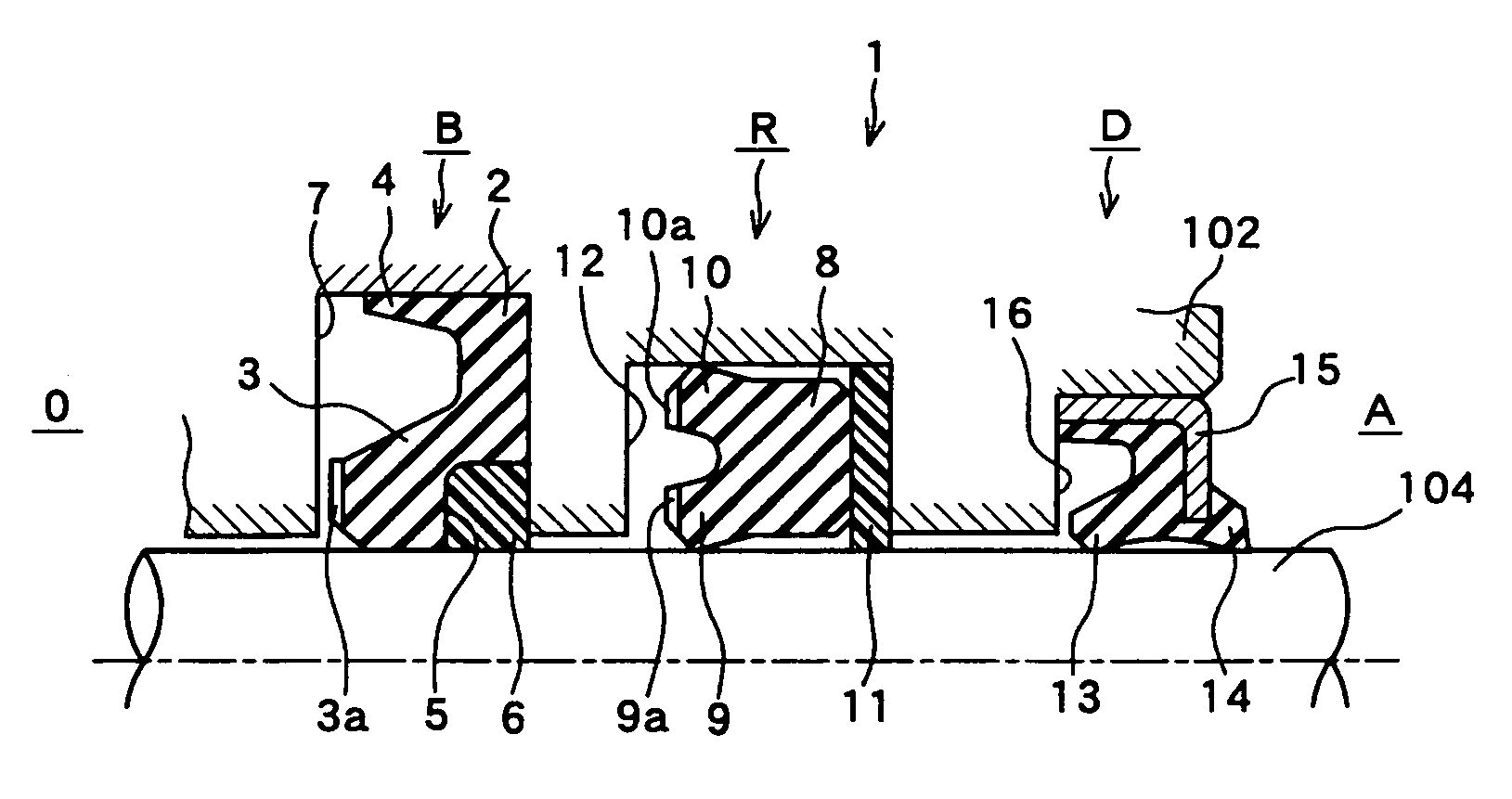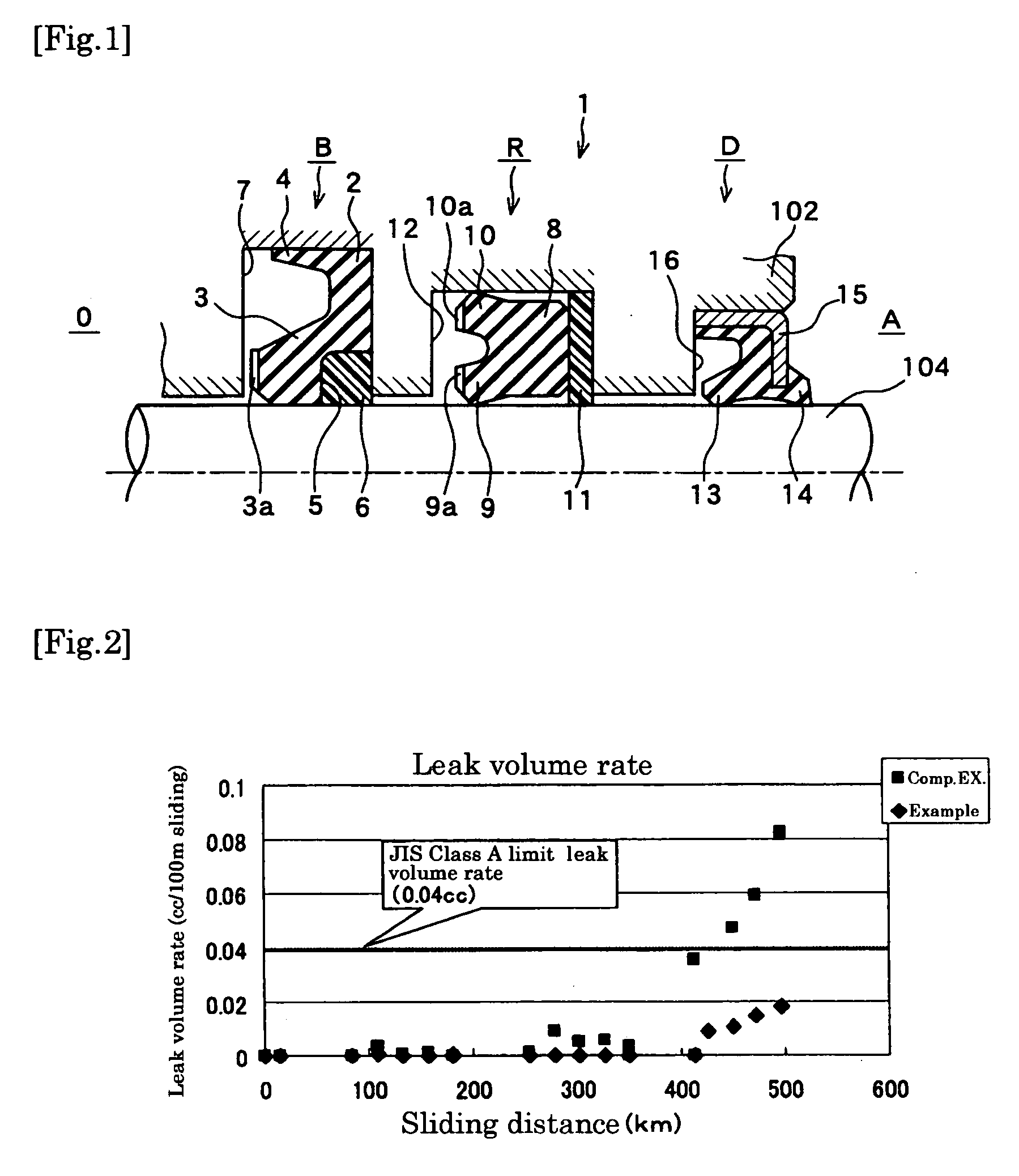Rod Sealing System
a sealing system and rod technology, applied in the direction of brake systems, machines/engines, other chemical processes, etc., can solve the problems of reducing mechanical strength, affecting the sealing effect, so as to improve the durability against leakage due to a loss of resilience, the effect of satisfactory follow-up to eccentricity
- Summary
- Abstract
- Description
- Claims
- Application Information
AI Technical Summary
Benefits of technology
Problems solved by technology
Method used
Image
Examples
example
Evaluation of Rate of Loss of Resilience of Buffer Ring
[0079]A rod sealing system, as shown in FIG. 1, was made up, using the heat-treated thermoplastic polyurethane molding product obtained in the afore-mentioned Reference Example, and subjected to a durability test under the following conditions to calculate a rate of loss of resilience as follows:
Rate of loss of resilience (%)=(interference before test−interference after test) / (interference before test)×100
[0080](Durability Test Conditions)
[0081]Pressure: 42 MPa
[0082]Sliding speed: 400 mm / sec.
[0083]Sliding distance: 500 km and 120 km
[0084]Temperature: 110° C. and 120° C.
[0085]In rod sealing system 1 of the working embodiment as used in the afore-mentioned durability test, U-shaped packing 2 of buffer ring B was made of the heat-treated thermoplastic polyurethane molding product obtained in the afore-mentioned Reference Example; backup ring 6 of buffer ring B was made of polyamide (80NP, a product of NOK); U-shaped packing 8 of ro...
PUM
| Property | Measurement | Unit |
|---|---|---|
| glass transition point Tg | aaaaa | aaaaa |
| temperature | aaaaa | aaaaa |
| temperatures | aaaaa | aaaaa |
Abstract
Description
Claims
Application Information
 Login to View More
Login to View More - R&D
- Intellectual Property
- Life Sciences
- Materials
- Tech Scout
- Unparalleled Data Quality
- Higher Quality Content
- 60% Fewer Hallucinations
Browse by: Latest US Patents, China's latest patents, Technical Efficacy Thesaurus, Application Domain, Technology Topic, Popular Technical Reports.
© 2025 PatSnap. All rights reserved.Legal|Privacy policy|Modern Slavery Act Transparency Statement|Sitemap|About US| Contact US: help@patsnap.com


